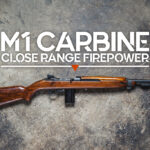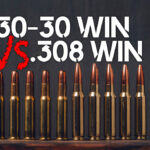
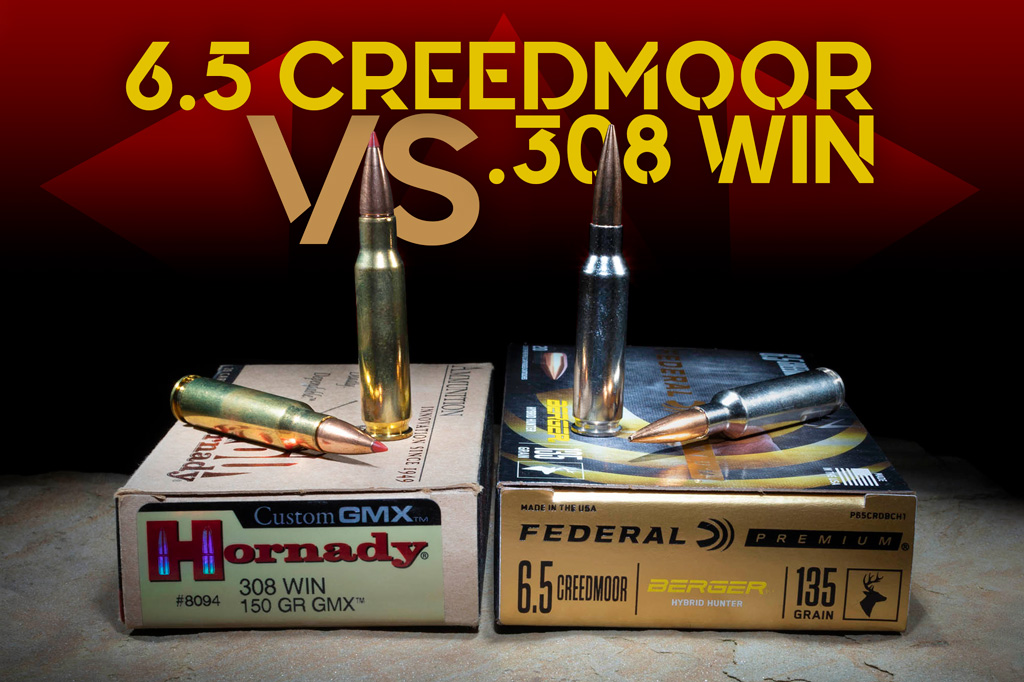
By Guy J. Sagi
Declaring a winner in a 6.5 Creedmoor VS 308 debate is a dubious venture. Both centerfires are tame in the recoil department, provide enviable performance at surprising distances and take big game with dexterity. They even run in the same magazines, but there are significant differences that can make one a better choice than the other for most gun owners.
You can’t go wrong either way, however. They both perform with versatility at the range and in the hunting fields, but there are advantages and drawbacks worth weighing. Here are a few key considerations, beginning with the question fielded most often by the team at Widener’s. Is the 6.5 Creedmoor a good choice for hunting?
The short answer is “yes,” at least for most big game taken in the United States. It is not, however, the best choice for dropping a large bear with authority and its relatively diminutive size makes it less than optimal for elk or moose. A look at the cartridge’s original purpose explains.
6.5 Creedmoor VS 308: Foundational Precision
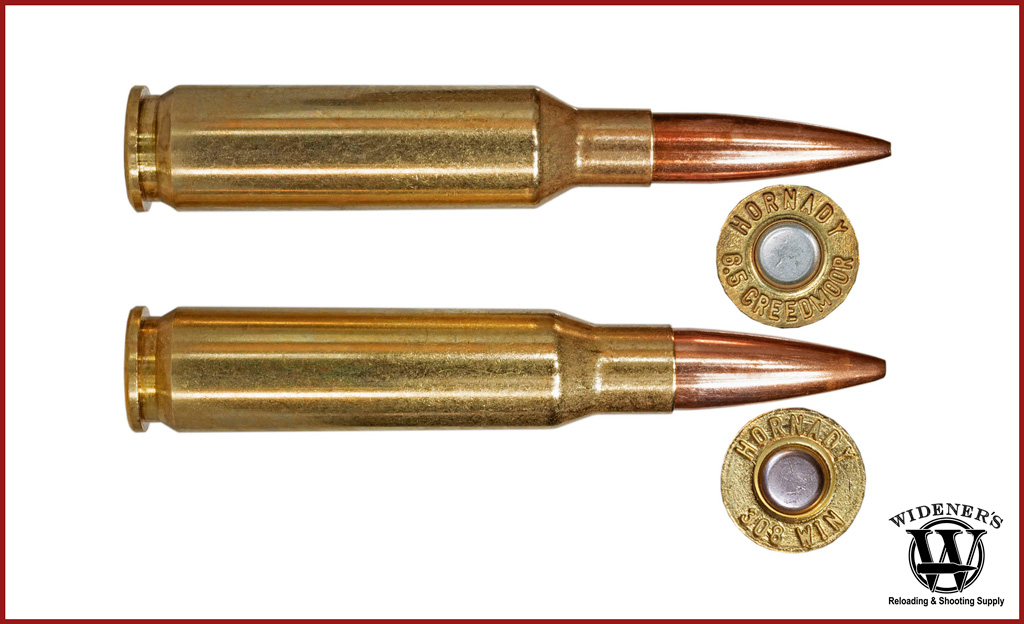
The 6.5 Creedmoor (Top) features a .264″ diameter bullet, while the .308 Win (Bottom) features a .308″ diameter bullet.
Shot placement is the most critical component when it comes to ethically filling a big-game tag, and that’s where the 6.5 Creedmoor has an advantage over .308 Win. When Hornady launched it in 2007 the introductory product sheet boldly proclaimed it was “Rocket Fuel for Your Race Gun.”
Competitive shooting was the target market, and the first loads reflected that focus. Hornady’s initial offerings wore 120-grain and 140-grain A-Max bullets. The former left the barrel at 3,020 fps and was still traveling at 1,386 when it reached 1,000 yards (bear in mind the test barrel length was 28 inches).
With a 100-yard zero, it dropped 44 inches at 500 yards. By comparison, a .308 Win.168-grain A-Max Hornady load left the same length barrel 240 fps slower and the holdover to hit the bullseye at 500 yards went up to 54.8 inches.
Ballistic Charts:
| Caliber (24″ Barrel) | Muzzle | 100 Yards | 200 Yards | 300 Yards | 400 Yards | 500 Yards |
|---|---|---|---|---|---|---|
| 6.5 Creedmoor 140gr Hornady A-Max | 2710 FPS | 2564 FPS | 2422 FPS | 2285 FPS | 2152 FPS | 2023 FPS |
| Energy | 2283 FT/Lbs | 2043 FT/Lbs | 1823 FT/Lbs | 1622 FT/Lbs | 1439 FT/Lbs | 1273 FT/Lbs |
| Trajectory | -1.5″ | 1.9″ | 0″ | -7.8″ | -22.3″ | -44.4″ |
| Caliber (24″ Barrel) | Muzzle | 100 Yards | 200 Yards | 300 Yards | 400 Yards | 500 Yards |
|---|---|---|---|---|---|---|
| .308 Win 168gr Hornady A-Max | 2700 FPS | 2513 FPS | 2333 FPS | 2161 FPS | 1996 FPS | 1839 FPS |
| Energy | 2719 FT/Lbs | 2355 FT/Lbs | 2030 FT/Lbs | 1742 FT/Lbs | 1486 FT/Lbs | 1261 FT/Lbs |
| Trajectory | -1.5″ | 2″ | 0″ | -8.4″ | -24.3″ | -48.9″ |
Wind Drift Considerations
For practiced shooters adjusting for distance becomes routine and precise, but there’s a more serious challenge afield. Wind drift, that ever-changing and hard-to-dope variable, can frustrate even experienced enthusiasts.
6.5 Creedmoor is fast, and that means gusts, breezes and those unseen cross drafts have less time to affect flight path. Ballistics from Federal’s Premium’s Gold Medal line illustrate that fact.
The company’s 168 -grain Sierra MatchKing .308 ammo load—the lightest it offers in that chambering—drifts 22 inches at 500 yards in a 10-mph breeze. The firm’s heaviest 6.5 Creedmoor ammo offering, with a 140-grain Sierra MatchKing, in the same conditions, moves only 18.1 inches.
Steady winds are one thing, but it’s a rare opening day when there aren’t gusts, or unseen wind between a hunter and his quarry. That faster bullet minimizes complicated calculations and reduces the temptation to employ Kentucky windage. Hunters wanted that advantage and the industry responded.
Choosing A Hunting Cartridge

Comparing 6.5 Creedmoor VS 308 is difficult for hunting. On paper, both look like great options, but in the field .308 has size & weight advantage.
Companies now offer 6.5 Creedmoor loads with bullets that feature the terminal performance ideal for hunting. Regardless of their design, however, there is one unavoidable drawback to the 6.5 Creedmoor when compared to .308 Win. Entry wound size has a diameter of .256 inches instead of .308.
There’s also a byproduct from the fact that cartridge length and dimensions are so close that they run in the same magazines. A 6.5-mm projectile of the same length won’t weigh as much as a .308. That translates to less energy at the target.
Hunting Ammo Options
Federal’s Premium’s 140-grain Nosler AccuBond 6.5 Creedmoor load generates 2,224 ft./lbs. of energy as it leaves the gun. At 500 yards the figure has dropped to 1,086. In .308 Win. the company offers a 180-grain Trophy Bonded Tip load. Muzzle energy for it comes in at 2,743 ft./lbs. and it’s still packing a wider, 1,313 punch at 500 yards.
The energy reduction is significant, although the wind advantage still goes to the 6.5. Federal’s Premium Centerfire Rifle 150-grain TSX load in .308 Win. drifts 26.6 inches in a full-value 10 mph wind at 500 yards. The company’s 140-grain, AccuBond in 6.5 Creedmoor drifts 19.2 in the same breeze.
Seven inches is enough to make the difference between a clean, one-shot kill or hours of tracking and possibly never recovering the trophy. Choose a heavier .308 projectile and that gap closes slightly, but it comes with additional recoil.
The energy delivered downrange indicates when distances reach 500, 600 yards, or beyond, the .308 Win. is a better choice. With the 6.5 Creedmoor’s inherent accuracy and ability to buck the wind, it’s not hard to argue it’s ideal for antelope, and most whitetails and mule deer are never targeted at that distance.
For those lucky enough to be pursuing elk, moose, or bear, the .308 Win. is probably a better choice. Shot placement is critical, but terminal performance and energy delivered remain key.
Ballistic Charts:
| Caliber (20″ Barrel) | Muzzle | 100 Yards | 200 Yards | 300 Yards | 400 Yards | 500 Yards |
|---|---|---|---|---|---|---|
| 6.5 Creemoor 140gr Federal Nosler Accubond | 2675 FPS | 2501 FPS | 2334 FPS | 2173 FPS | 2018 FPS | 1870 FPS |
| Energy | 2224 FT/Lbs | 1944 FT/Lbs | 1693 FT/Lbs | 1467 FT/Lbs | 1266 FT/Lbs | 1086 FT/Lbs |
| Trajectory | .9″ | 2″ | 0″ | -8.5″ | -24.3″ | -48.4″ |
| Caliber (20″ Barrel) | Muzzle | 100 Yards | 200 Yards | 300 Yards | 400 Yards | 500 Yards |
|---|---|---|---|---|---|---|
| .308 Win 180gr Federal Trophy Bonded Tip | 2620 FPS | 2445 FPS | 2277 FPS | 2116 FPS | 1960 FPS | 1812 FPS |
| Energy | 2743 FT/Lbs | 2389 FT/Lbs | 2072 FT/Lbs | 1789 FT/Lbs | 1536 FT/Lbs | 1313 FT/Lbs |
| Trajectory | 1.0″ | 2.2″ | 0″ | -8.9″ | -25.5″ | -51.1″ |
Ammo Type Variety
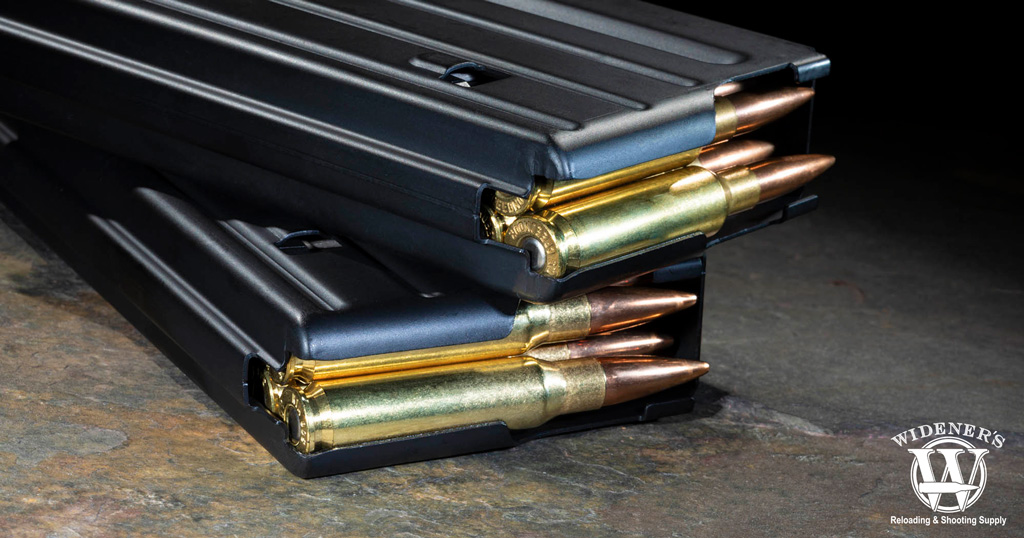
There are a LOT of options for 6.5 Creedmoor ammo, but .308 rounds can be found more easily, and often in bulk surplus.
The .308 Win. cartridge has been around for more than seven decades, and its performance keeps it at or near the top of today’s most popular short-action cartridges. Manufacturers offer it in a wide range of bullet weights and versions tailored for everything from big game to competition, and even in bulk packs.
Hornady alone offers 22 different loads in the cartridge. Bullet weights run from a chunky 220-grain InterLock RN to the recently introduced125-grain ECX.
The 6.5 Creedmoor is junior by many years and load selection has yet to reach the same level of diversity. Again, looking at Hornady’s lineup, there’s only a dozen from which to choose. Maximum bullet weight comes in at 147-grains, and it wears an ELD Match bullet designed for competition, not hunting. On the lighter side of the scale there’s a 95-grain V-Max load perfect for varmint hunting.
The limit in selection isn’t unique to Hornady, either. Federal Premium’s Centerfire Rifle line offers only five loads in 6.5 Creedmoor. Bullet weights run from 120- to 140-grains. In .308 Win., however, there are 13 varieties currently listed in the company catalog with bullets that weigh from 150- to 180-grains.
There is no doubt companies will close that gap with each passing year, but there’s limited selection today.
Navigating Availability & Scarcity
Ammunition shortages can be a painful reality for enthusiasts. If shooting is one of your passions, unscheduled pandemics, conflicts, and the social unrest that causes them are on your radar. Add the National Shooting Sports Foundation’s estimate that more than 10 million people took ownership of their first firearm during the current decade, and that magnitude is likely to increase in the future.
During ammo shortages, caliber like 6.5 Creedmoor can be hard or impossible to find. This is partly because manufacturers shift production to cartridges enthusiasts demand most during a surge.
After the Covid-19 shortage began, for example, every company interviewed placed its highest priority on increasing output of 9 mm, .223 Rem. and 5.56 NATO. Next on the list came .45 ACP, .308 Win. and 7.62 NATO. That left huge gaps, including 6.5 Creedmoor.
Ammo Stacking Strategies
Selection in .308 Win. temporarily disappeared as well, but it was among the first to return. Guns chambered for the cartridge can also run 7.62 NATO, so those owners had less to complain about. Even when there’s no panic buying, mom-and-pop sporting goods stores don’t always carry a wide selection of 6.5 Creedmoor.
Those supply-chain challenges are noteworthy, but they should not deter anyone from purchasing a 6.5 Creedmoor-chambered firearm. If hunting is the gun’s ultimate mission, simply accumulate enough for sighting in and hunting for several seasons. The modest round count keeps the purchase within most budgets.
Even when inventories are high, 6.5 Creedmoor cartridges are usually more expensive than .308 Win. It’s not a huge concern for hunters, but if high-volume shooting is a passion and you’re accustomed to finding low-cost, off-shore ammo, it’s worth noting.
6.5 Creedmoor VS 308: Best Choice?
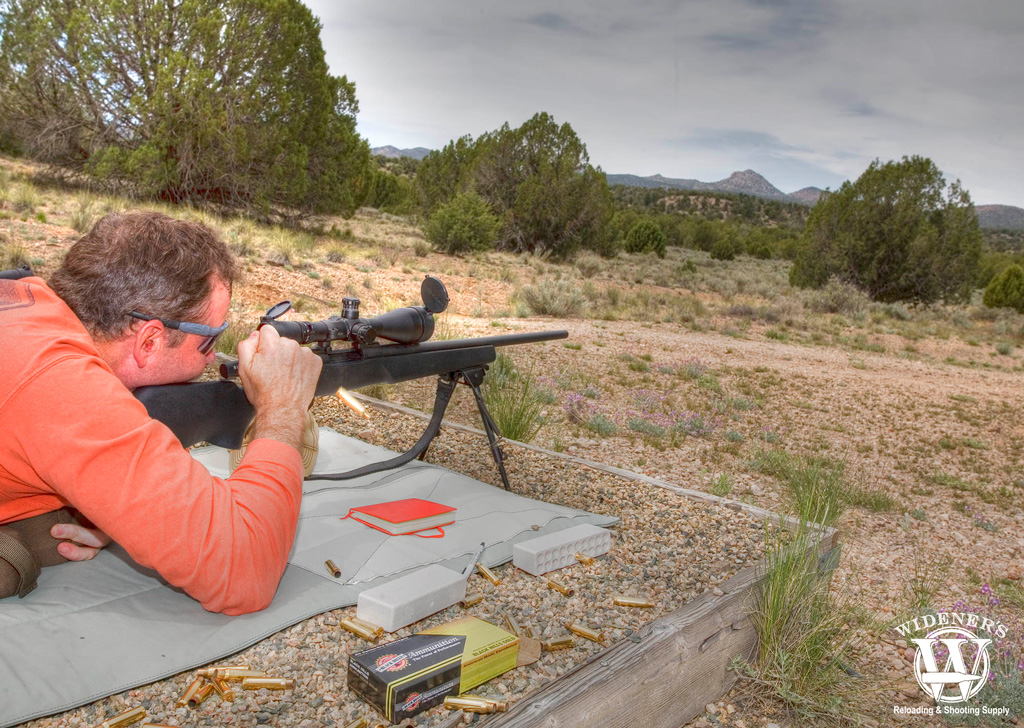
6.5 Creedmoor VS 308: Velocity, reduced recoil, and accuracy go to the 6.5 Creedmoor, but the .308 has more availability, creates larger wound channels, and hits targets with more energy at distances.
The 6.5 Creedmoor is currently generating the kind of social-media buzz that’s hard to ignore. There are solid reasons for the popularity, too. It’s accurate, performs, and comes with all the advantages of running in a short action—including slightly lighter weight and reduced gun length. Add tame recoil and it’s hard to find a reason not to like the cartridge.
It’s already endeared itself to a variety of long-distance shooting schools. One of the earliest sessions at the Bergara Shooting Academy, for example, featured 6.5 Creedmoor-chambered rifles exclusively.
The .308 Win., once the darling of nearly all those seminars, has temporarily taken a back seat. We can chalk part of that up to age. Winchester introduced it to the public in 1952 and NATO officially adopted its 7.62×51 mm form in 1954. It celebrated its 70th anniversary in 2022, and now that it’s wearing modern bullet designs, loads are better than ever.
Some proclaim a winner in the 6.5 Creedmoor VS 308 debate, but no two shooters are the same. Each enthusiast must determine their individual victor by considering their shooting style, preference, and primary pursuit. Viral posts and magazine headlines don’t fill tags or shrink groups.


